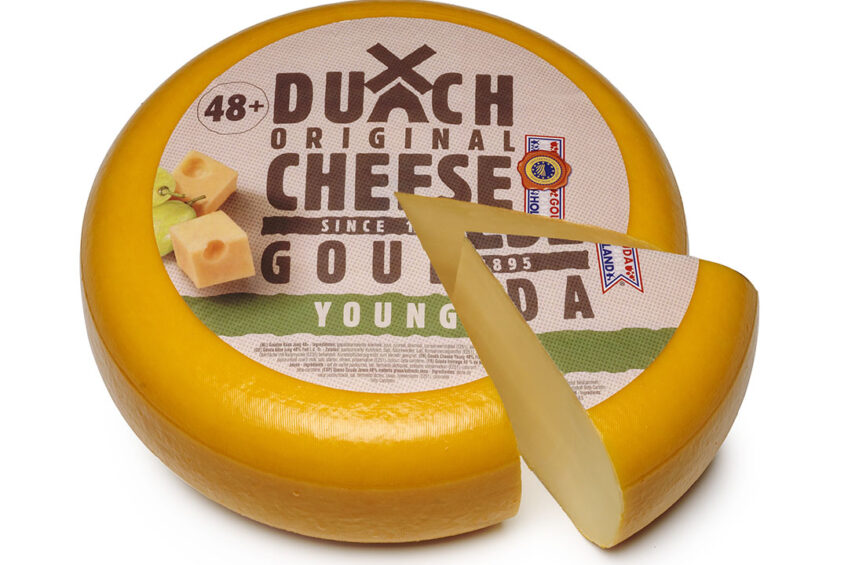Less margins, but Dutch produce more cheese

From 2012, margins on cheese have structurally declined for most cheese producers in the Netherlands. Nonetheless, the Dutch have produced a lot more cheese.
This is according to a new Rabobank report: Filling the hole in the Dutch cheese market.
More milk, more cheese
Dutch cheese production has recorded exceptional growth since 2012, outpacing the limited consumption growth in northwestern Europe. This has diluted margins and weakened the position of cheese producers in the value chain. Northwestern Europe (the Netherlands, Germany, and Belgium) is the main consumer market for Dutch (semi-)hard cheeses such as Gouda. However, Dutch cheese production is still forecast to increase to nearly 930,000 metric tons (MT) by 2022, based on increased liquid milk imports and investments in additional processing capacity. Since 2012, Dutch milk production has increased by 2.7m metric tons, to a peak of 14.3m metric tons in 2016 and 2017. After this exceptional growth, Dutch milk production declined to 13.9m metric tons in 2018. Due to environmental compliance requirements, Dutch milk production is expected to be capped near 14m metric tons.
However, there are still opportunities for Dutch dairy companies to increase their milk supply. The EU allows free trade of milk and dairy products between member states, enhancing cross-border trade. Moreover, from a cost (logistics and farmgate prices) and milk quality perspective, the milk supply field doesn’t stop at the border for a large proportion of Dutch cheese processors. Including German and Belgian regions close to the Dutch border could potentially add 8m to 12m metric tons to the supply field for Dutch dairies.

Dutch consumption to remain stable
The Dutch cheese market is mature, with a relatively high annual per capita consumption of nearly 22kg – of predominantly (semi-)hard cheeses. Limited Dutch population growth resulted in an annual cheese consumption of approximately 370,000 metric tons in 2017, or about 40% of the annual production volume. Rabobank expects that the Dutch cheese consumption will remain relatively stable, at around 370,000 metric tons to 380,000 metric tons annually, between 2018 and 2022.
Most Dutch cheese in 500km radius
Due to marginal consumption growth since 2012, along with increased trade volumes, the importance of domestic consumption for the Dutch cheese industry has decreased over time. During this period, export volumes grew by approximately 190,000 metric tons, to nearly 901,000 metric tons in 2017 – nearly two-and-a-half times the domestic consumption volume and exceeding the production volume. Nearly 50% of the additional cheese production since 2012 was absorbed by exports to Germany and Belgium. About 75% of Dutch cheese is consumed within 500km of the Dutch border, indicating the importance of margin growth in (northwestern) Europe.
Opportunities outside the EU
Outside of the EU, expanded trade agreements such as the Economic Partnership Agreement, implemented on February 1, 2019 with Japan – the largest export destination for Dutch cheese outside of Europe – are expected to improve the export position in many regions. Rabobank forecasts that the exportable surplus will increase to nearly 925,000 metric tons by 2022, based on additional cheese production and stable cheese imports. Rabobank forecasts China’s annual cheese import to near 200,000 metric tons by 2023. Combined Chinese, ASEAN-5, Japanese, and South Korean cheese exports are expected to exceed 700,000 metric tons annually by 2023.
Changing consumer preferences
In the report, Rabobank addresses that consumer preferences are changing, and it sees increasing demand for convenience and personalised nutrition, including online sales, local products, and specialties. For online sales of cheese for example, The Rabobank writes that despite strong growth figures in some countries, the base for online cheese sales is still relatively small across northwestern Europe. Nonetheless, online food sales are expected to grow toward a 20% to 25% market share in Europe by 2030, in favour of the traditional retail channels. As a result, ‘online’ is forecast to result in a zero-sum game in terms of the total cheese consumption volume. Focusing on the added value along the value chain, along with these new preferences, still provides opportunities for cheese producers to secure healthier margins, Rabobank concludes.
Join 13,000+ subscribers
Subscribe to our newsletter to stay updated about all the need-to-know content in the dairy sector, two times a week.










